As an Amazon Associate, I earn from qualifying purchases with no additional costs for you.
With its many marshes, mountains, forests, rivers, and coasts, the diverse landscape of Alabama is the perfect place for rockhounds who are looking to add unique rocks, minerals, or gemstones to their collections. In this list, we have compiled the most common rocks and minerals you can find in Alabama, along with the best rockhounding locations for each one.
In the state of Alabama, the most common rocks and minerals you can find are:
- marble,
- limestone,
- sandstone,
- granite,
- shale,
- hematite,
- quartz,
- muscovite,
- beryl,
- and gold.
Before rockhounding in a new place, it’s helpful to have an idea of what rocks or minerals you can expect to see in the area. This list of common rocks and minerals can act as your guide, showing you what you can expect to find while rockhounding in the beautiful state of Alabama.
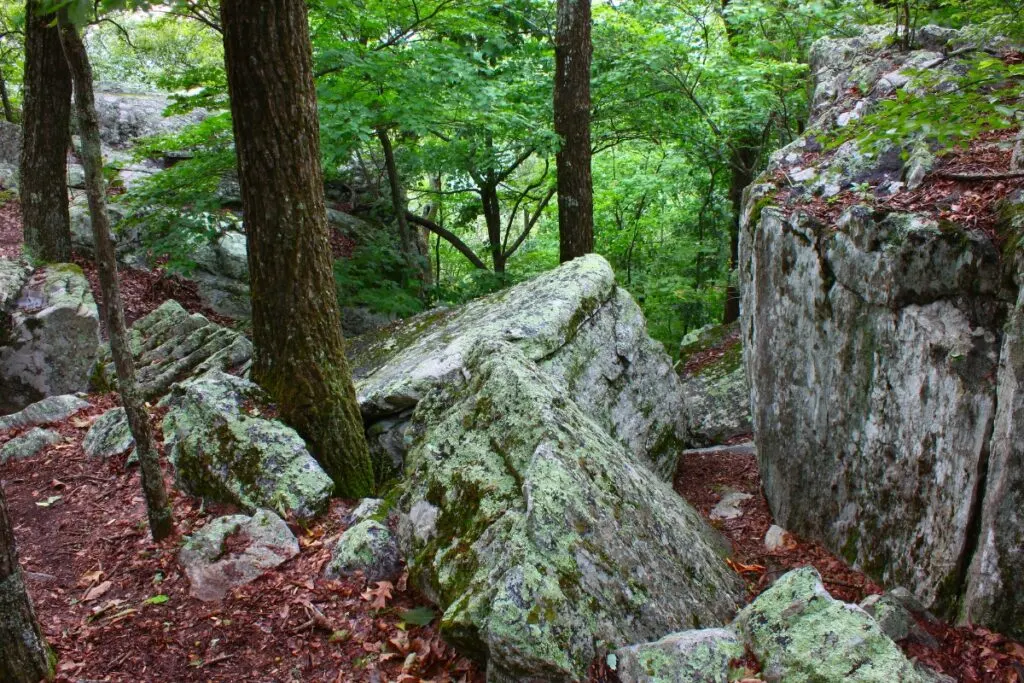
If you are interested in checking out the best rockhounding tools you can find them by clicking here (Amazon link).
What Rocks Are Found in Alabama
The geology of Alabama is just as varied as its landscape, and there are all kinds of sedimentary, metamorphic, and igneous rocks scattered throughout the state, such as:
Marble
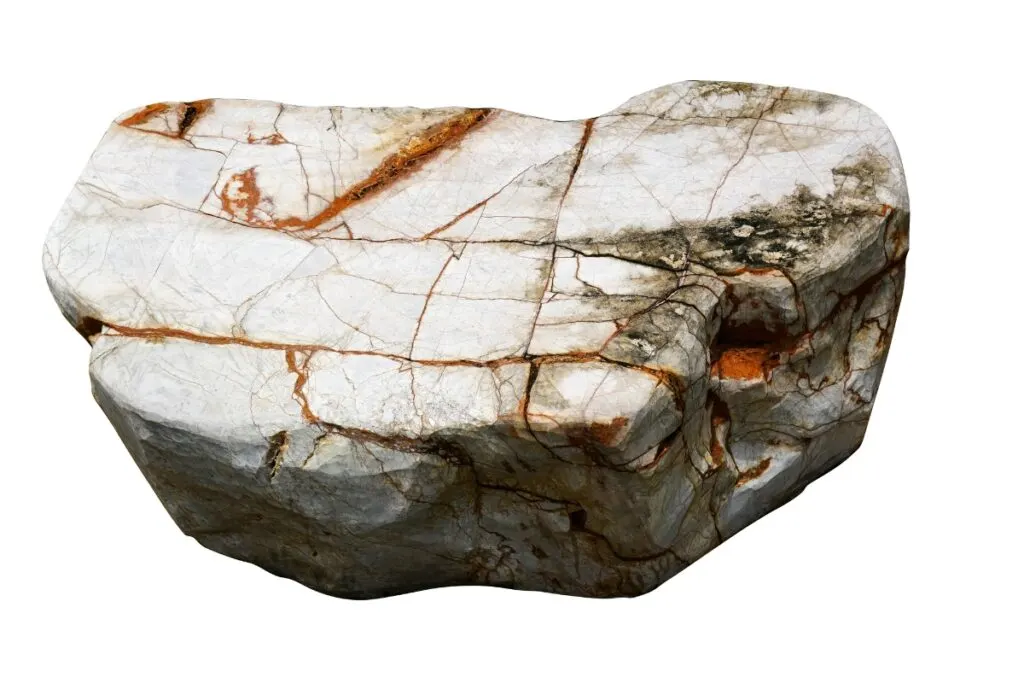
| Location | GPS Coordinates |
|---|---|
| Talladega County | 33.396708 -86.159712 |
| Flint River | 34.769529, -86.443264 |
| Shoal Creek | 33.449125, -86.655778 |
| Cahaba River | 33.102333, -87.049153 |
| Mohawk Trail | 33.810443, -86.043630 |
| Lake Harding | 32.697534, -85.128129 |
| Rainbow City | 33.902046, -86.076095 |
| St. Clair County | 33.782525, -86.055132 |
Did you know that some of the finest marble in the world comes from Alabama? Marble is a metamorphic rock that’s typically white or pink in color and has a crystalline appearance. Alabama marble is known as the whitest marble in the world, and it is renowned for its beauty.
It became famous when master sculptor Giuseppe Moretti claimed, “The white marble of Talladega County is the finest marble in the world, and it is here in unlimited quantity.” Because of its popularity and abundance in the state, marble was nominated as Alabama’s official state rock in 1969.
While marble exists in many areas of the state, high-quality pieces are often found in or near the Sylacauga marble belt, which is located in Talladega County. The marble from this area is called Sylacauga marble, and it has a higher value than marble found in other locations.
TIP: You can find marble in most U.S. states. Check out the complete guide with the best spots for finding marble in the article below:
Where to Find Marble: Best Environments & Locations (USA)
Limestone
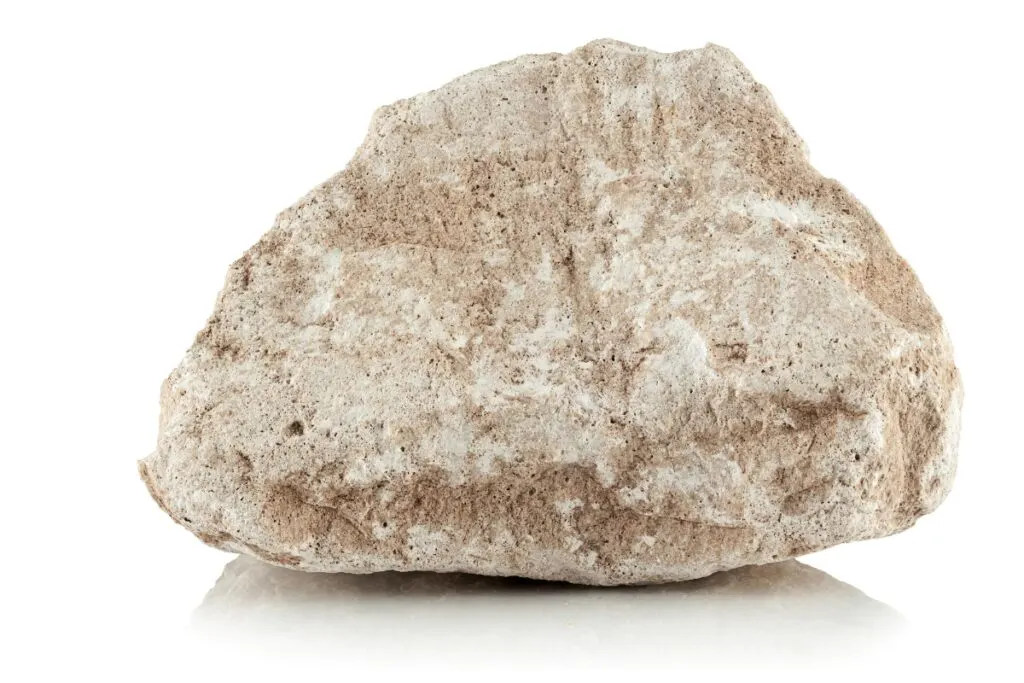
| Location | GPS Coordinates |
|---|---|
| Tombigbee River | 31.468647, -88.045178 |
| Demopolis County | 32.512464, -87.848541 |
| Yellowleaf Creek | 33.269360, -86.463241 |
| Grimmel Pond | 32.819927, -87.817696 |
| Sumpter County | 32.827231, -88.183168 |
| Cahaba River | 33.016826, -87.082938 |
| Locust Fork | 33.574750, -87.142949 |
Another sedimentary rock that is plentiful in Alabama is limestone, which is known for its beauty and durability. Limestone comes in grey, white, yellow, or brown colors, and it can appear crystalline, oolitic, clastic, or dense.
In Alabama, the oolitic limestone has a white to light grey background and silver or charcoal veining. Because of its natural splendor and machinability, Alabama limestone is often used for structures, buildings, and monuments.
Another type of limestone that is particularly abundant in Alabama is chalk, and you can find the pure white rock along the bluffs of riverbanks in West-Central Alabama.
As you would expect, the best places to find limestone and other sedimentary rocks in Alabama are near creeks or large rivers, such as the Tombigbee River.
Recommendation box: All tools and equipment you need for rockhounding and rock identification* (Amazon links):
1. Estwing Rock Hammer – Light, comfortable, and extremely durable hammer.
2. Estwing Geologist Pick – Classic and the most trusted paleo pick in the world.
3. Finder 12-inch Chisels – Heavy-duty chisels set with hand protection.
4. Mini Handle Shovel – This is a great tool for digging deep in the dirt.
5 Ironclad Utility Work Gloves – Breathable, but they also protect the areas requiring them most.
6. 3M Safety Glasses – Comfortable and efficient goggles for rockhounding.
7. Convoy 8+ UV Light – 365nm UV LED flashlight with a patented glass filter.
8. Wesley’s Jewelers Loupe – High magnification options (30X and 60X) with carrying case.
9. Mohs Hardness Kit – A specially designed kit for rockhounds
*All recommended products are personally tested and regularly used by experts from this website.
Sandstone
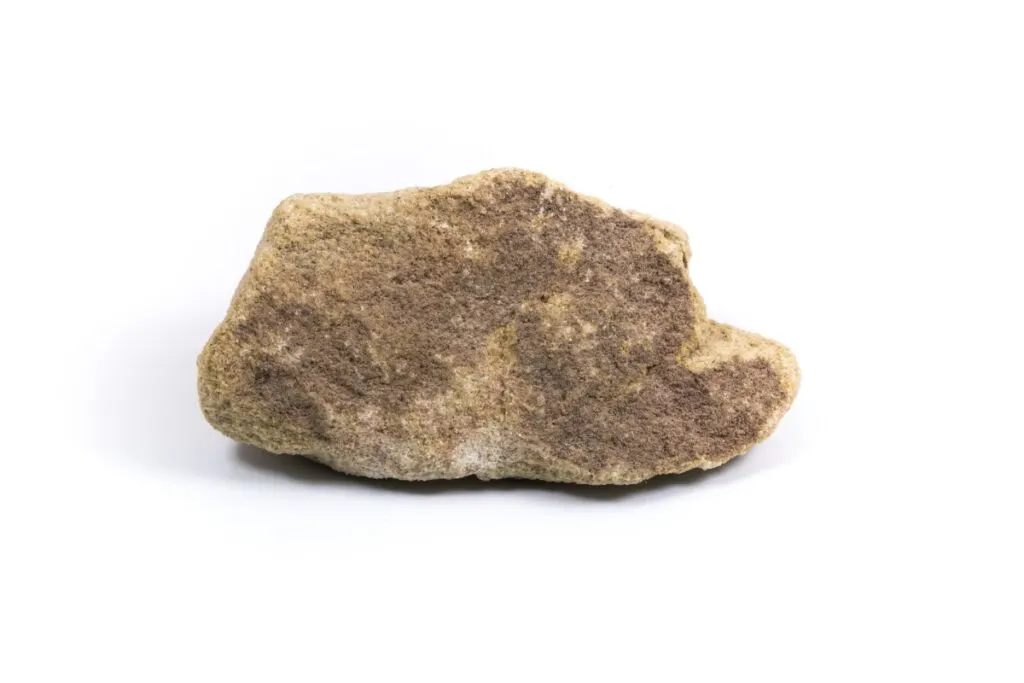
| Location | GPS Coordinates |
|---|---|
| Lewis Smith Lake | 34.004579, -87.183659 |
| Tallahatta Springs Road | 31.916281, -87.977055 |
| Marshall County | 34.403215, -86.273215 |
| Dry Creek | 33.707956, -86.661007 |
| Jefferson County | 33.529032, -86.570109 |
| Mill Creek | 33.932001, -86.815309 |
| Banks Creek | 33.158405, -87.206399 |
If you enjoy collecting ancient rocks, take a look around Alabama for some Hartselle sandstone. This Mississippian Period sandstone was laid down over 325 million years ago when Alabama was covered by a shallow sea.
Just like other sedimentary rocks, this sandstone comes in multiple colors, including tan, brown, pink, purple, and red, and it often has a gritty and granular texture. Hartselle sandstone can be found primarily in northern Alabama, but it exists in many areas of the state.
Also, this particular type of sandstone is often surrounded by or intertwined with shale, so keep an eye out for it in shaley layers of rock.
One popular destination for rockhounds who are on the hunt for sandstone is Lewis Smith Lake, which is surrounded by plenty of sedimentary rocks as well as various minerals.
Granite
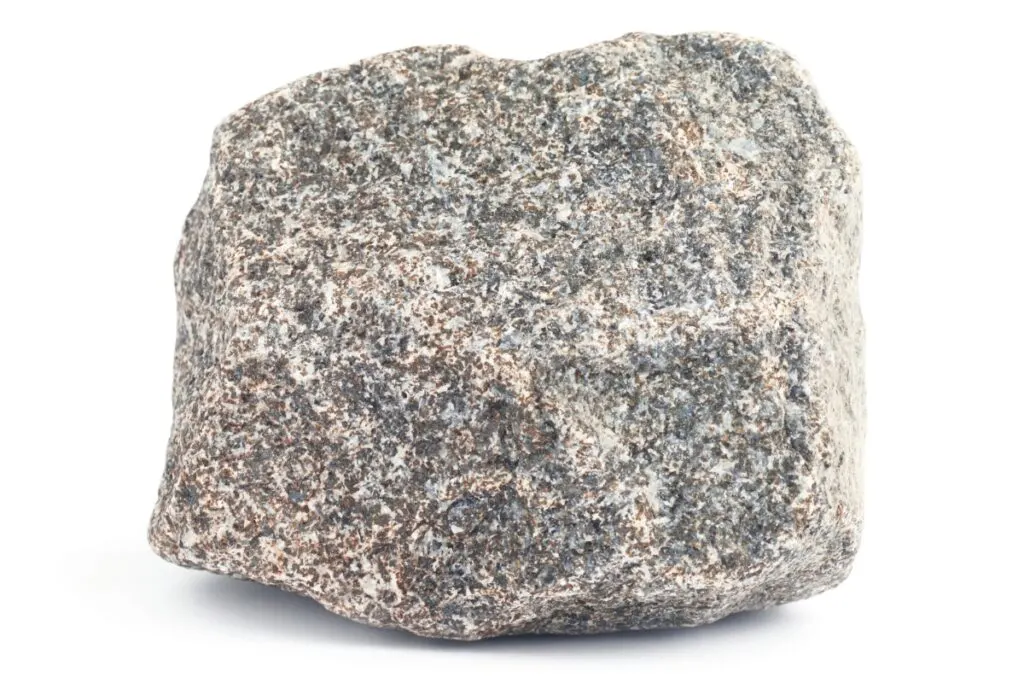
| Location | GPS Coordinates |
|---|---|
| Coosa River | 32.853309, -86.412528 |
| Hatchet Creek | 33.023606, -86.133454 |
| Ashland County | 33.281641, -85.821302 |
| Beecham Lake Road | 33.929743, -85.477568 |
| Holland Creek | 32.497211, -85.034231 |
| Clay County | 33.463160, -85.770698 |
| Tallapoosa River | 33.622715, -85.513310 |
| Russel County | 32.342641, -85.053865 |
Although Alabama’s marble often steals the spotlight, Alabama granite is not to be ignored. With its small crystals and pink, white, and black coloring, Alabama’s granite has a lovely swirl of colors and is easy to distinguish from other rocks.
As a matter of fact, the durable, high-quality granite from Alabama is considered to be one of the best for architecture and ornamental structures.
One location where granite is plentiful is near the Coosa River in Coosa County, and you can also find other types of igneous rocks in this area, such as diorite and pegmatite, which are both rare and valuable rocks.
TIP: Granite is an interesting intrusive igneous rock that is found all around the United States. Check out the complete guide on finding granite in the article below:
Where to Find Granite: Best Environments & Locations (USA)
Shale
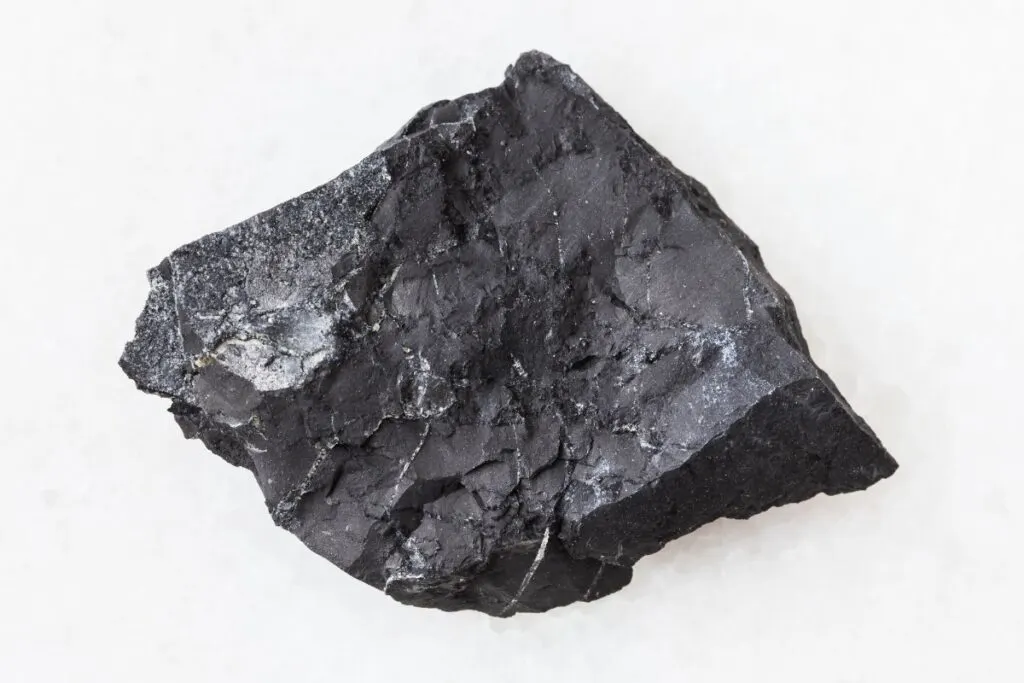
| Location | GPS Coordinates |
|---|---|
| Tuscaloosa County | 33.278361, -87.399417 |
| St. Clair County | 33.521096, -86.297668 |
| Lake Purdy | 33.481440, -86.633168 |
| Greene County | 32.834749, -88.148800 |
| Valley Creek | 33.447460, -87.121612 |
| Dorsey Creek | 33.353274, -87.554212 |
| Sipsey River | 33.393654, -87.772356 |
While you can find shale all over Alabama, northern St. Clair County has a very old kind of shale called Conasauga shale.
Cambrian Conasauga shale is much older than Mississippian Floyd shale which is also found in nearby regions; shale can be identified by its thin layers or plates, and it often comes in black, brown, or red colors.
Unlike other types of shale, Conasauga shale is known for its hardness and durability. Shale can be found almost anywhere in Alabama, but it’s abundant near Tuscaloosa County, and Conasauga shale is plentiful near St. Clair County and Black Warrior Basin.
BTW: Do you want to know more about rock and mineral identification? The books listed below are the best ones you can find on the internet (Amazon links):
- Smithsonian Handbooks: Rocks & Minerals
- Gemstone & Crystal Properties (Quick Study Home)
- Ultimate Explorer Field Guide: Rocks and Minerals (National Geographic Kids)
What Minerals Are Found in Alabama
Any rockhound who stops by Alabama has the opportunity to find many unique and special minerals, including:
Hematite
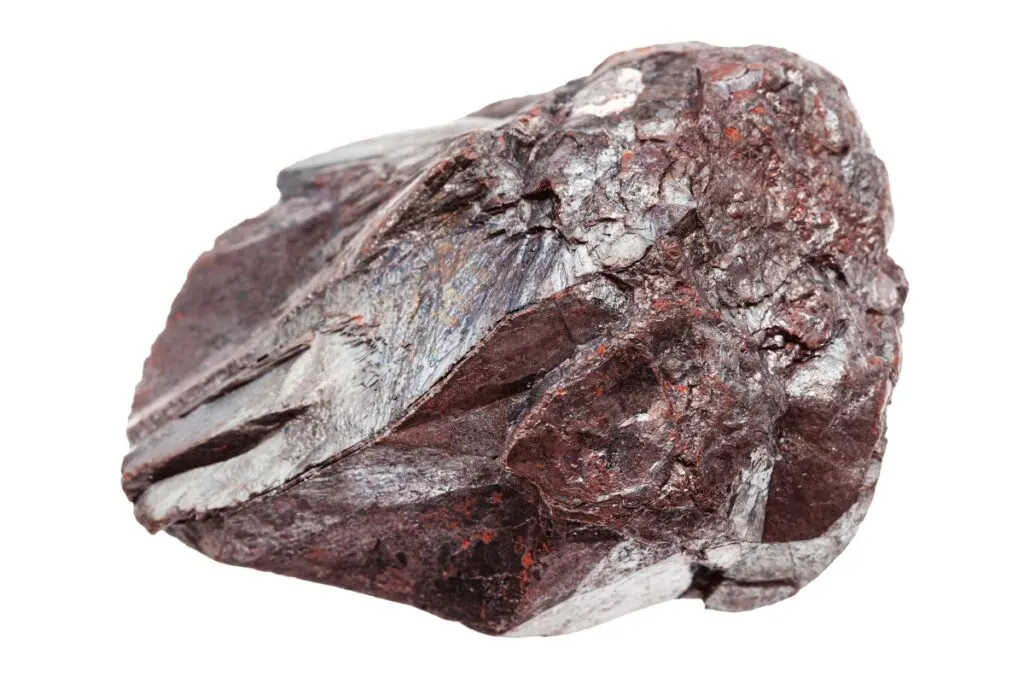
| Location | GPS Coordinates |
|---|---|
| Lake Martin | 32.814839, -85.885602 |
| Big Wills Creek | 34.520195, -85.674384 |
| Inland Lake | 33.858945, -86.476206 |
| Etowah County | 34.012993, -85.899460 |
| Red Mountain | 33.487437, -86.800811 |
| Valley Creek | 33.447365, -87.121790 |
| Pocahontas Road | 33.295646, -86.983089 |
| Lick Creek | 33.770449, -86.760061 |
Since hematite is Alabama’s official state mineral, it makes sense that determined rockhounds who are searching for this mineral often visit Alabama.
This iron ore can be identified by its reddish-brown streak that’s produced when the surface of the mineral is scratched. There are two types of ore in the vicinity of Birmingham Alabama, known as Red Iron Ore (hematite) and Brown Iron Ore (Limonite).
One fun fact about Birmingham ore is that master sculptor Giuseppe Moretti used it to create the largest cast-iron statue in the world, a depiction of Vulcan (the Roman god of fire).
The statue stands at the top of Red Mountain in Alabama, an area that’s known for its hematite. In addition to Red Mountain, hematite is also often picked up near various lakes and rivers, such as Lake Martin.
Quartz
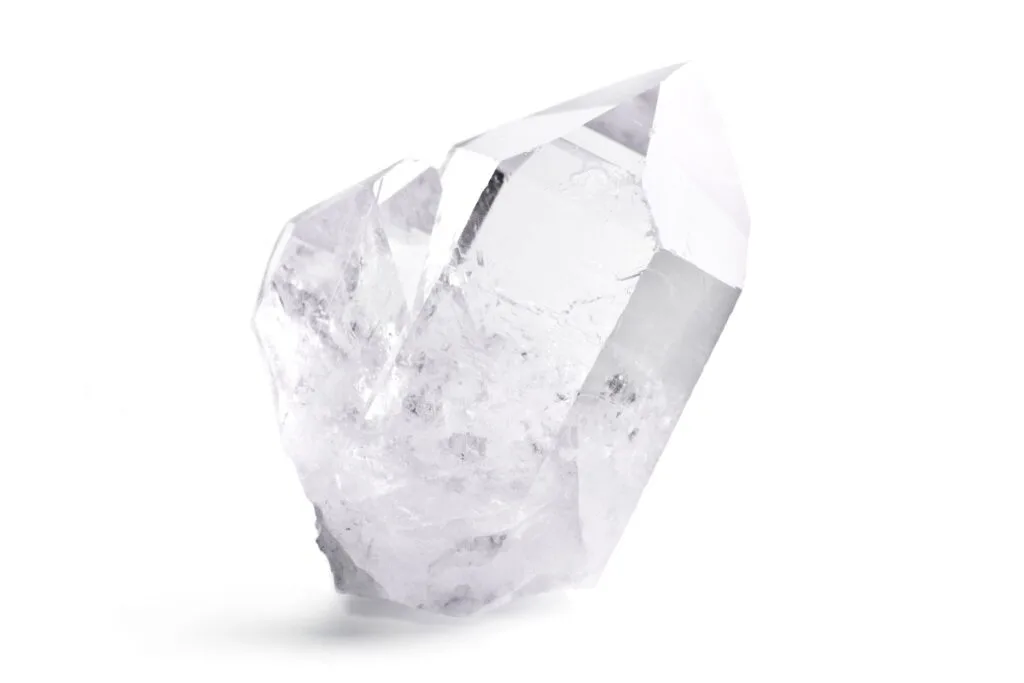
| Location | GPS Coordinates |
|---|---|
| Pleasant Grove Road | 33.323213, -85.686375 |
| Black Warrior River | 32.878973, -87.719630 |
| White Oak Creek | 34.063934, -87.138618 |
| Flemming Mine | 33.534410, -85.568866 |
| Buzzard Creek | 33.325114, -85.928315 |
| Lake Martin | 32.625225, -85.891362 |
| M & G Mine | 33.379861, -85.796889 |
| Camp Hill | 32.812046, -85.664272 |
Who doesn’t love to find a new, shiny piece of quartz to add to their collection? Alabama quartz can come in many colors, including pink, white, blue, green, and transparent.
In Alabama, you can find quartz almost anywhere, from riverbanks to roadsides, so you are likely to come across plenty of it during your rockhounding adventures.
One type of quartz that is unique to Alabama is called Blue Star Quartz. This interesting mineral is exclusive to Alabama, and it displays a stunning blue-grey color that is not found in any other type of quartz.
Blue Star Quartz is often discovered near the Flint River, so any rockhound who wants to collect this unique treasure should look in that area.
TIP: The process that forms quartz crystals is highly complex and requires immense pressure to form these crystals over the course of years. Find out more in the article below:
Forming of Quartz Crystals & Its Varieties Explained by PRO
Muscovite

| Location | GPS Coordinates |
|---|---|
| Pond Mine | 32.894444, -86.255806 |
| Red Mouth Creek | 32.892282, -86.227361 |
| Randolph County | 32.893310, -86.911036 |
| Shoal Creek | 33.713472, -85.618095 |
| Coosa County | 32.828902, -86.018139 |
| Weiss Lake | 34.190495, -85.654087 |
| Terrapin Creek | 34.057944, -85.612585 |
If you are searching for mica-bearing muscovite, then Alabama is the right place to be. Muscovite is easily distinguishable due to its thin, pearly sheets and perfect cleavage.
The muscovite in Alabama, particularly near Clay, Randolph, and Coosa Counties, is known to contain more mica and crystals than the pieces found in other regions of the U.S. To find muscovite, take some time to visit Pond Mine, an area that’s well known for its shiny pieces of this mineral.
Beryl
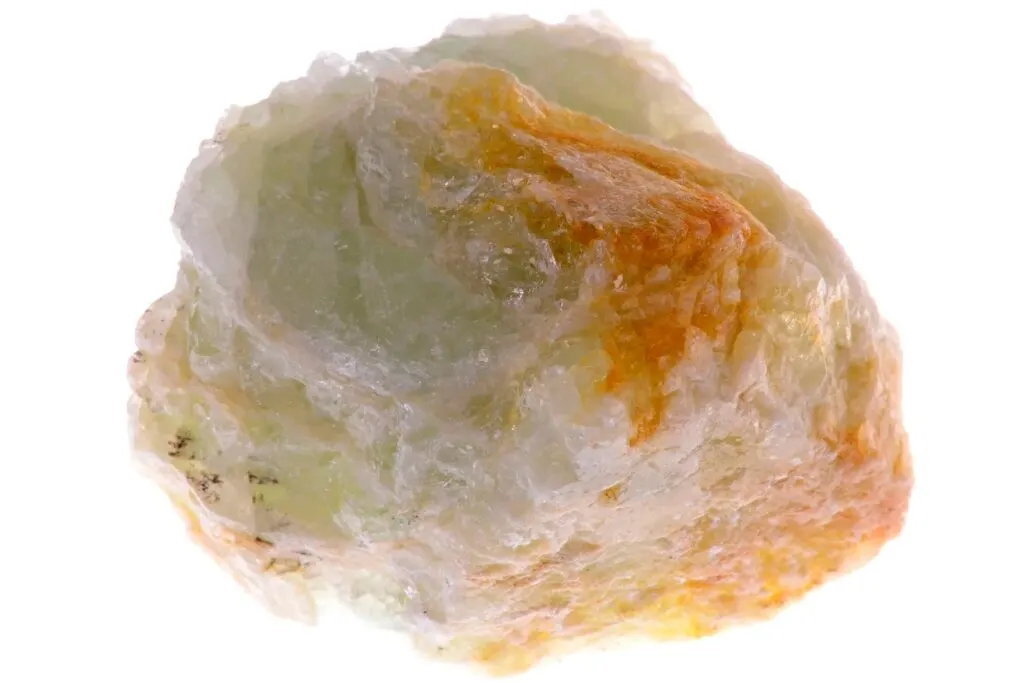
| Location | GPS Coordinates |
|---|---|
| Gold Mines Creek (West Side) | 33.353667, -85.883306 |
| Tallahaseehatchie Creek | 33.822073, -85.958851 |
| Cherokee County | 34.172501, -85.475114 |
| Ketchepedrakee Creek | 33.461470, -85.701857 |
| Delta Mine | 33.484090, -85.697383 |
| Tallapoosa River | 33.622608, -85.513347 |
| Talladega Creek | 33.381741, -86.187359 |
Any rockhound who has a passion for collecting beryl, which is the mother gem of precious gemstones such as emeralds and aquamarines, should stop by Alabama during their travels.
While Alabama beryl by itself is lovely and colorful, rockhounds seek out Alabama beryl because it often contains precious stones such as tourmaline, emeralds, and other minerals.
While beryl appears in a variety of colors, the ones found in Alabama are usually light green and are found among mica and pegmatites. If you want to find some Alabama beryl, take a look around Gold Mines Creek or visit other sites in the Piedmont area.
TIP: Beryls and emeralds are closely related. Their similarities and differences are not always highlighted, so there are some misunderstandings. Find out more in the article below:
Beryl vs. Emerald: 7 Key Differences (Are They The Same?)
Gold
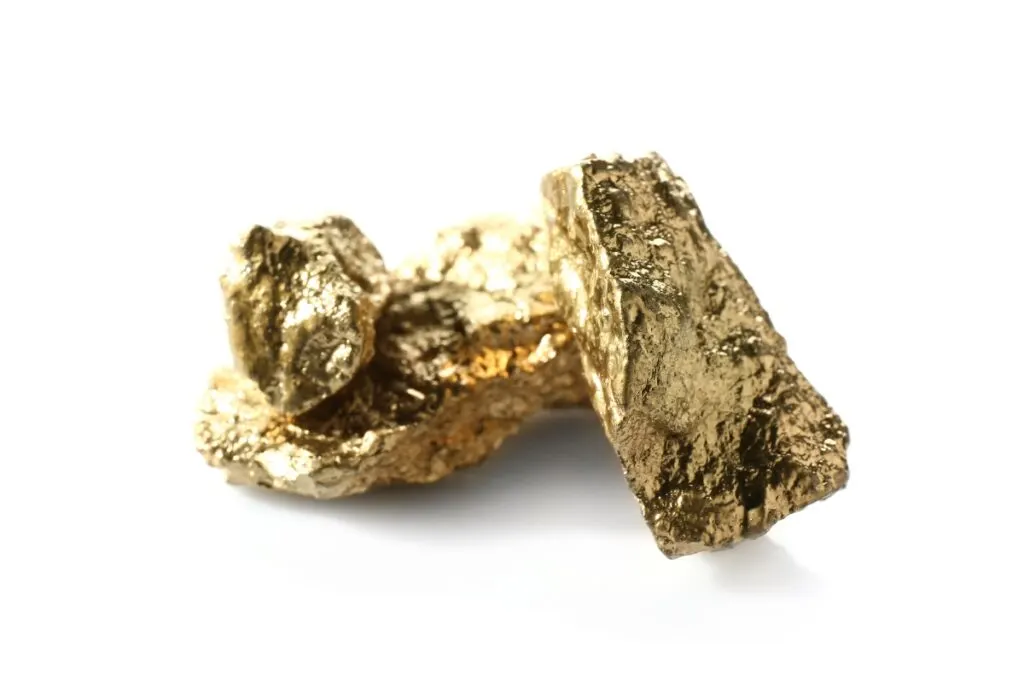
| Location | GPS Coordinates |
|---|---|
| Hog Mountain | 33.075936, -85.849745 |
| Gold Mines Creek | 33.358625, -85.885887 |
| Mulberry Creek | 32.807807, -86.816747 |
| Rockford | 32.876278, -86.213472 |
| Blue Creek | 33.360622, -87.093530 |
| Chestnut Creek | 32.776556, -86.556807 |
| Weogufka Creek | 33.078899, -86.227087 |
| Hatchet Creek | 33.023407, -86.132208 |
Although the Alabama gold rush happened many years ago in 1830, there’s still plenty of gold to be found in the state. In Alabama, gold has been found in both lode and placer deposits all over the east-central regions of the state.
Gold is often discovered near Talladega, Coosa, Clay, Chilton, and Randolph counties, and most rockhounds find small grains, not large nuggets; however, this is not always the case.
Large nuggets of gold have been found in certain areas of Alabama, such as Tallapoosa County, but they are much more difficult to find than gold dust or grains.
As you search for gold in Alabama, keep in mind that this state also has plenty of a similar-looking mineral called pyrite. It’s all too common for a rockhound to think they’ve discovered gold but then later find out that it’s pyrite, also known as “fool’s gold”.
If you are searching for pyrite or gold, Hog Mountain is a great place to start. However, keep in mind that if you decide to pan for gold, you will need a permit in the state of Alabama to do so legally.
TIP: There are many ways to find gold, from panning in rivers to using high-tech tools to help you find gold. Check out the complete guide on starting a gold prospecting in the article below:
Ultimate Beginner’s Guide: How To Start Gold Prospecting
FAQ About Common Rocks & Minerals in Alabama
To learn more about the rocks, minerals, and riches of Alabama, take a look at some of the most-asked FAQs for this state:
What Rare Rocks Can You Find in Alabama
While the state of Alabama contains plenty of common rocks, including sandstone, marble, and granite, you can also find some rare rocks, such as diorite, pegmatite, and quartzite.
Diorite is a rare igneous rock that can be identified by its dark and white specks, often referred to as a “salt and pepper” appearance. Interestingly, one of the most beautiful pieces of prehistoric Native American art called the Moundville Duck Bowl, is made of a large piece of diorite from Moundville, Alabama.
Pegmatite is an igneous rock that is composed almost entirely of crystals or minerals. One reason that Alabama pegmatites in particular are popular is because they can contain valuable gemstones, including topaz, aquamarine, and tourmaline.
The pegmatites in Alabama are also known to contain large quantities of lovely quartz crystals and other minerals, so you never know what you are going to get when you find a pegmatite in Alabama.
In addition to igneous rocks, rockhounds can also find other types of rare rocks in Alabama, such as quartzite.
Quartzite is a rare metamorphic rock that is composed almost entirely of quartz, and it can come in many colors, including pink, white, purple, orange, blue, and yellow. In Alabama, rockhounds often find quartzite in gray, coral, or amber colors.
To find diorite and pegmatite in Alabama, rockhounds usually visit Coosa County. For quartzite, you can stop by Lee County or Clay County.
Although these rocks are rare, it’s not uncommon for everyday rockhounds to find them during their trips, so keep an eye out for them the next time you visit Alabama.
What Rare Minerals Can You Find in Alabama
There are many rare minerals and gemstones that you can find in Alabama, including rubies, garnets, tourmalines, emeralds, onyxes, and gold.
Some other rare minerals that rockhounds often come across in Alabama are aquamarine, topaz, agate, amethyst, opal, jasper, and sapphire. It’s clear that any rockhound who wants to collect rare minerals won’t be disappointed in Alabama!
One of the best places for rockhounds who want to collect multiple types of rare minerals at once is Coosa County, Alabama.
Often called a rockhound’s paradise, Coosa County has a wide variety of rare minerals all in one area, so you won’t need to travel all over the state to find new rocks and minerals for your collection.
What is the Most Famous Rock or Mineral Found in Alabama
While there are many unique rocks and minerals that exist in Alabama, the most famous one is Blue Star Quartz. As the name implies, this popular quartz is known for its rich blue-grey color, and it was nominated as Alabama’s state gemstone in 1990.
Although quartz itself is one of the most common minerals that comes in many colors, it’s rare to find it with a unique blue-grey hue.
As a matter of fact, Blue Star Quartz is considered to be the most beautiful of the common gemstones, and the reason it is not expensive is because it is so plentiful in Alabama.
Even though Blue Star Quartz is found all over Alabama, it’s not easily found anywhere else in the world, so every rockhound should be sure to add a piece to its collection before leaving the state.
Any rockhound who wants to add Blue Star Quartz to a collection should visit the Flint River, which is located in Madison County, Alabama. Although you can find Blue Star Quartz in other areas of Alabama, it’s most abundant near the Flint River, which is close to the Georgia border.
Conclusion
Whether you prefer collecting rocks, minerals, or gemstones, it’s clear that Alabama is one of the best places for rockhounds to visit. You never know for sure what you might find during your rockhounding excursions.
From unique minerals such as Blue Star Quartz to exquisite rocks such as Sylacauga marble, Alabama is certainly not lacking when it comes to exceptional and beautiful treasures.
The next time you are in this southern state, be sure to visit a few of the rockhounding sites mentioned above to find some one-of-a-kind additions to your collection.
TIP: Alabama is one of the best places for rockhounding due to its rich deposits of minerals, rocks, and gemstones. Check out the complete rockhounding guide in the article below:
Where to Rockhound in Alabama & What Can You Find
